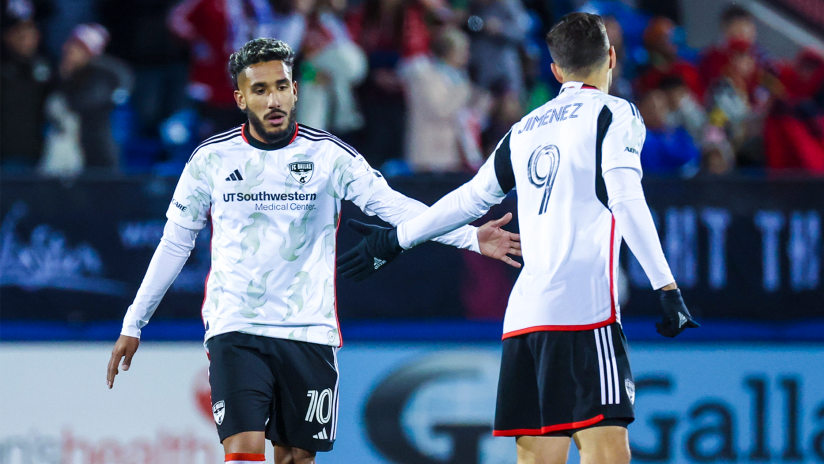FRISCO, Texas - FC Dallas' win over Kansas City was eventful: A second-half comeback, two Maarten Paes penalty saves and an Alan Velasco banger for an equalizer. It also featured the long-awaited debut of Jesús Jiménez, who'd been forced to wait in the stands for three weeks while the wheels of bureaucracy slowly turned. After receiving his P1 Visa last week, the Spanish forward introduced himself to Toyota Stadium as a 82nd-minute substitute for midfielder Sebastian Lletget.
The change of personnel also included a change of formation: from 4-3-3 to 4-2-3-1. Jesús Ferreira withdrew somewhat from his central striker position (which, to be fair, he already drifts in and out of periodically) to occupy an attacking midfielder role, allowing Jiménez to replace him as the focal point of the attack. Alan Velasco and Paul Arriola remained on the wings while Edwin Cerrillo and Tsiki Ntsabeleng were paired together at the base midfield.
The new formation/personnel helped create the winning goals just two minute later. Ferreira, as an advanced midfielder, won an aerial pass from José Martínez which was collected and immediately given away by the SKC backline. Dallas moved forward quickly with Paul Arriola playing into space for Geovane Jesus. As the ball trickled forward, Jiménez was the first FCD player to make his run toward the six-yard box with Ferreira trailing behind him. Jiménez's run occupied both center backs and SKC's deepest midfielder failed to track Ferreira, leaving him wide open to connect with Geovane's cross and score the go-ahead goal. It only took two minutes for FCD's new forward to add a new dimension to the attack. (goal sequence below)
The 4-2-3-1 doesn't necessarily need to be for late-game, goal-needy scenarios only. It offers a new wrinkle to the FCD frontline that has rarely strayed from the trident of Velasco - Ferreira - Arriola. Since it requirs one less traditional midfielder, it gives Nico Estévez a chance to give one of his workhorses a rest; which he may have to do this week with Paxton Pomykal day-to-day with hamstring soreness.
It also helps that Ferreira and Jiménez's complement each other's play styles. They aren't dissimilar forwards: Jiménez has the ability to drop in and add to the play-making side of things as well, albeit without the same consistency (shown in Figures 3 and 4 below). And we know Ferreira can lead a line after his 18-goal haul in 2022. But here's some helpful graphs that illustrate those opinions (and they are opinions, considering the two have played together for a grand total of 8 game-minutes).
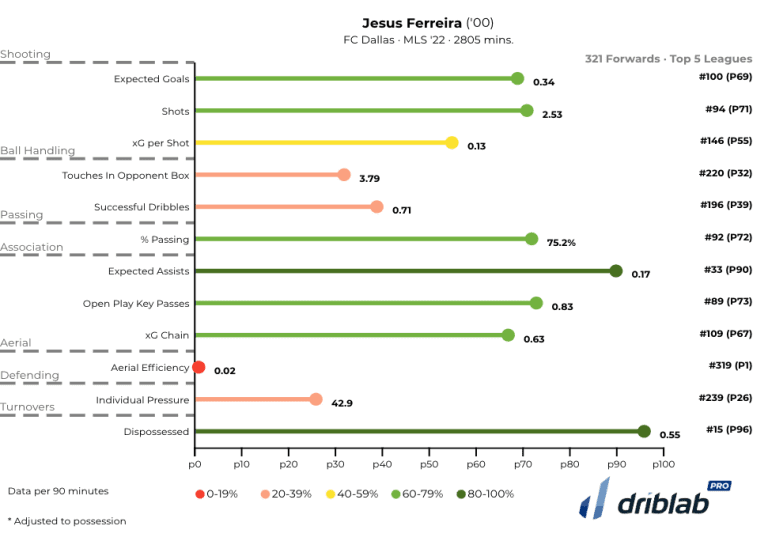
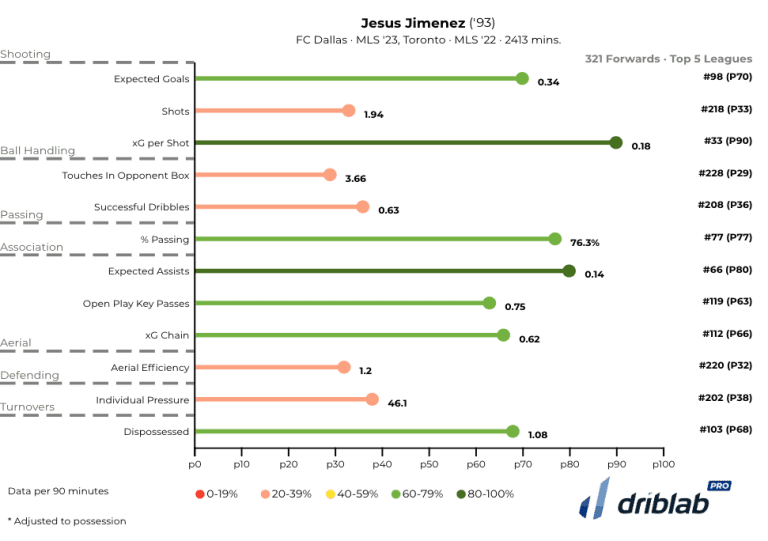
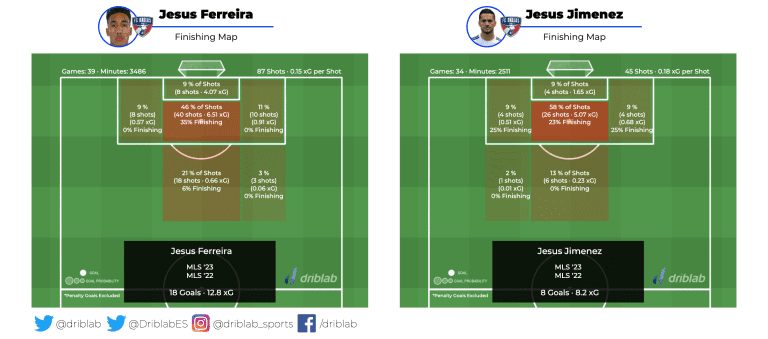
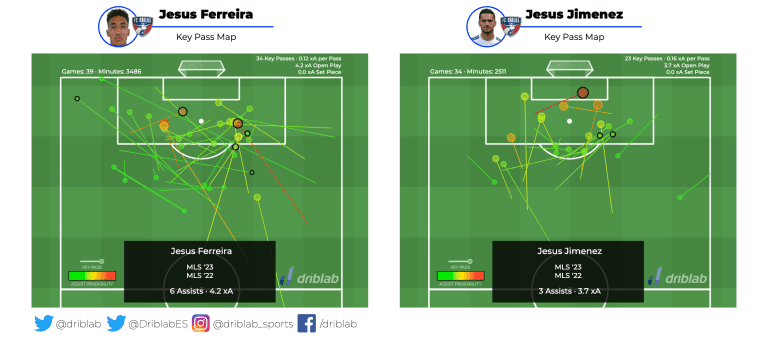
As you can see in Figures 1 and 2, Ferreira and Jiménez's strengths and weaknesses are similar. Expectedly, Ferreira is more creative (higher Expected Assists, more Open Play Key Passes) while Jiménez is much stronger in the air and averages higher Expected Goals per Shot - both traits you find in more traditional #9. But they're not opposites at all, which makes it easier for FCD to switch between the 4-3-3 with Ferreira as the striker and the 4-2-3-1 with Jiménez up top alone. It also opens the door for a 4-4-2 with the pair playing alongside one another. That increased flexibility in attack could prove to be a big help for Dallas this year, especially after relying on the same front three for so long.

